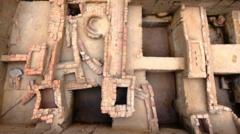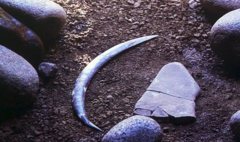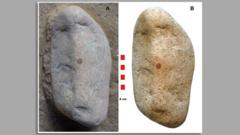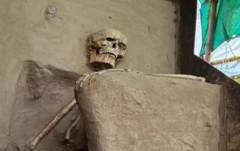Rakhaldas Banerjee, an Indian archaeologist whose brilliance was marred by controversy, made a momentous discovery that laid the groundwork for our understanding of one of the world's earliest urban civilizations. In the early 20th century, he uncovered Mohenjo-daro—literally translating to "mound of the dead men"—in present-day Pakistan, revealing the previously concealed remnants of the Indus Valley Civilization that flourished during the Bronze Age across what is now north-east Afghanistan and north-west India.
As a pioneering figure in the Archaeological Survey of India (ASI) during the British colonial era, Banerjee exhibited a relentless passion for uncovering historical artefacts and ruins. He spent months traversing the subcontinent, albeit with a penchant for conflict due to defying colonial expectations, often resulting in disputes and a tarnished reputation that led to a lack of acknowledgment of his monumental contributions.
Despite the significance of his findings, Banerjee’s reports—including those detailing his discoveries at Mohenjo-daro—were never published. In fact, its discovery is often credited to ASI chief John Marshall, which has fueled criticisms about the suppression of Banerjee's achievements. According to fellow archaeologist PK Mishra, Banerjee's independent methods and clashes with protocols kept his name relegated to a mere footnote in history.
Banerjee's journey began in 1885 in Bengal, where a deep fascination for history took root among the medieval monuments of his hometown, Baharampur. By joining the ASI in 1910, he rapidly ascended to the position of superintending archaeologist, encountering Mohenjo-daro in 1919. His excavations revealed an array of treasures including ancient seals, coins, and remnants of urban settlements, particularly uncovering formations linked to the expansive Indus Valley Civilization—known now to encompass approximately 386,000 square miles.
However, after initial success and the discovery of seals that illustrated a profound connection to contemporaneous sites like Harappa, Banerjee's career was impeded by financial issues and accusations of mismanagement. Despite his remarkable contributions, his requests for transfers led to a diminished presence on site and controversies around financial expenditures also propelled disciplinary actions against him within the ASI.
Further setbacks came when Banerjee became embroiled in a case of idol theft connected to a revered Hindu shrine, but ultimately the allegations were dispelled. He resigned from ASI in 1927, and faced ongoing financial struggles due to a lavish lifestyle, before accepting a professorship at Banaras Hindu University in 1928. Tragically, Banerjee's life was cut short, passing away at just 45 in 1930, still shrouded in the shadows of both his pioneering discoveries and complex legacy.
Banerjee's story serves as a reminder of the importance of recognizing historical figures who, despite their struggles and controversies, have made significant impacts in the realms of archaeology and history, paving the way for future generations to uncover and understand ancient civilizations.





















